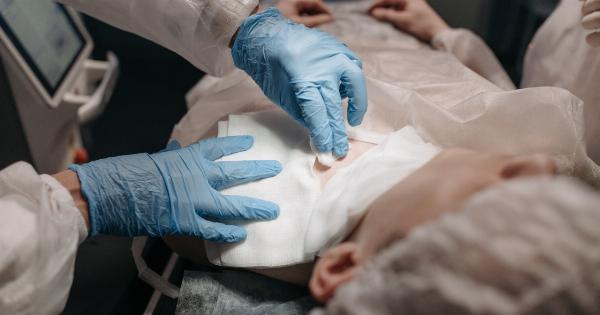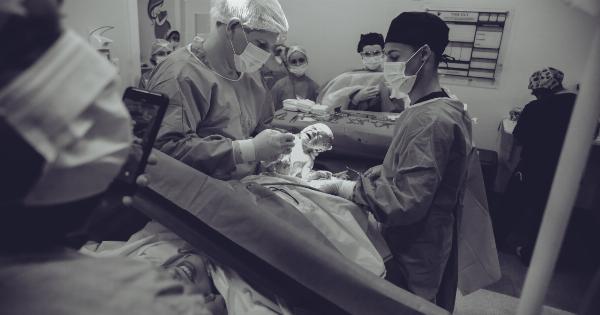Titan is a groundbreaking surgical technique that has revolutionized the field of abdominal surgery. This innovative approach offers several advantages over traditional methods, providing patients with improved outcomes and faster recovery times.
In this article, we will explore the Titan technique in detail, discussing its benefits, the surgical process, and its potential impact on abdominal surgery.
The Need for Innovation
Abdominal surgeries are commonly performed to address various medical conditions such as appendicitis, hernias, tumors, and gastrointestinal disorders.
Traditional abdominal surgery typically involves a large incision, known as a laparotomy, through which the surgeon gains access to the abdominal cavity. While effective, this method is associated with significant pain, prolonged recovery times, and the risk of complications.
Recognizing the need for a less invasive approach, medical professionals have been striving to develop new techniques that reduce pain, minimize scarring, and expedite recovery.
The Titan technique is an exceptional response to this demand and has gained significant attention in the medical community.
Understanding the Titan Technique
The Titan technique involves performing abdominal surgeries through a series of small incisions instead of a single large one.
This laparoscopic approach utilizes advancements in technology, such as high-definition cameras and specialized surgical instruments, to enhance visualization and precision.
The crucial aspect of the Titan technique is the use of robotics and advanced imaging systems. Surgeons control robotic arms equipped with surgical instruments, which can be inserted through the small incisions.
The high-definition cameras provide a magnified view of the surgical site, allowing surgeons to navigate with utmost precision.
The Advantages of Titan
The Titan technique offers numerous advantages over conventional abdominal surgery.
1. Minimally Invasive
The use of small incisions significantly reduces the trauma inflicted on the body, leading to minimized scarring, reduced blood loss, and decreased post-operative pain.
This minimally invasive approach also lowers the risk of complications and infections, contributing to a quicker recovery.
2. Enhanced Precision
Robotic arms enable surgeons to achieve a level of dexterity and precision that is unmatched by traditional surgical techniques.
The high-definition cameras provide a magnified, three-dimensional view of the surgical site, allowing for meticulous maneuvering and accurate tissue manipulation.
3. Shorter Hospital Stay
Patients who undergo the Titan technique typically experience shorter hospital stays compared to those who undergo traditional open surgery.
The combination of less tissue trauma and reduced post-operative pain facilitates a quicker return to normal activities.
4. Faster Recovery
Due to the minimally invasive nature of the Titan technique, patients typically experience a faster recovery. They may resume their daily activities sooner, leading to improved overall quality of life.
5. Reduced Risk of Infection
As the Titan technique involves smaller incisions, the risk of infection is significantly decreased. The smaller wounds heal faster and are less likely to become infected, further improving patient outcomes.
The Surgical Process
The Titan technique involves several key steps to ensure a successful surgery.
1. Patient Preparation
Prior to the surgery, patients undergo a thorough evaluation to assess their suitability for the Titan technique. This evaluation may include physical examinations, medical history reviews, and diagnostic tests.
2. Anesthesia Administration
Once the patient is prepared, anesthesia is administered to ensure a pain-free surgical procedure. The choice of anesthesia will be determined by the patient’s overall health and the surgical requirements.
3. Incision Placement
The surgeon makes small incisions in strategic locations around the abdomen to allow access for the robotic arms and surgical instruments. These incisions are meticulously placed to maximize surgical precision.
4. Robotic Assistance
Robotic arms are inserted through the incisions, allowing the surgeon to control the surgical instruments remotely. The high-definition camera provides a clear view of the surgical site, guiding the surgeon’s actions.
5. Surgical Procedure
Using the robotic arms and surgical instruments, the surgeon performs the necessary procedures with utmost precision. Throughout the surgery, the surgeon continuously monitors the progress on the monitor.
6. Closure
Once the procedure is complete, the surgeon removes the robotic arms and carefully closes the small incisions. Sutures or adhesive strips may be used to secure the incisions.
Current Applications of the Titan Technique
The Titan technique has already found applications in various abdominal surgeries.
1. Appendectomy
Appendectomy, the removal of the appendix, can be effectively performed using the Titan technique. The minimally invasive approach reduces trauma and pain for the patient, allowing for a quicker recovery.
2. Hernia Repair
Hernias, which occur when an organ protrudes through weak muscles, can be repaired using the Titan technique. This approach minimizes post-operative pain, lowers the risk of hernia recurrence, and enables swifter recovery.
3. Cholecystectomy
The Titan technique is utilized in gallbladder removal surgeries, known as cholecystectomies. This procedure offers patients a reduced risk of infection, enhanced precision, and a quicker return to normal activities.
4. Colorectal Surgery
Colorectal surgeries, such as the removal of colon polyps or parts of the large intestine, can be performed using the Titan technique. The minimally invasive approach leads to less pain, shorter hospital stays, and faster recovery times.
The Future of Titan
The Titan technique holds immense potential for the future of abdominal surgery. As technology advances, surgeons are likely to have access to even more sophisticated robotic systems and imaging tools.
Further development and refinement of the Titan technique will result in improved patient outcomes, decreased hospital stays, reduced scar tissue, and enhanced overall surgical experiences.
Surgeons will continue to explore new applications for this groundbreaking technique, expanding its reach to benefit a broader range of patients.
Conclusion
The Titan technique has revolutionized abdominal surgery, offering patients an innovative, minimally invasive approach to achieve improved outcomes and quicker recovery times.
With its advanced robotic systems and high-definition imaging, this groundbreaking surgical technique is transforming the field of abdominal surgery. As the Titan technique continues to evolve, the future holds promise for further advancements in surgical precision, reduced scarring, and enhanced patient experiences.


























